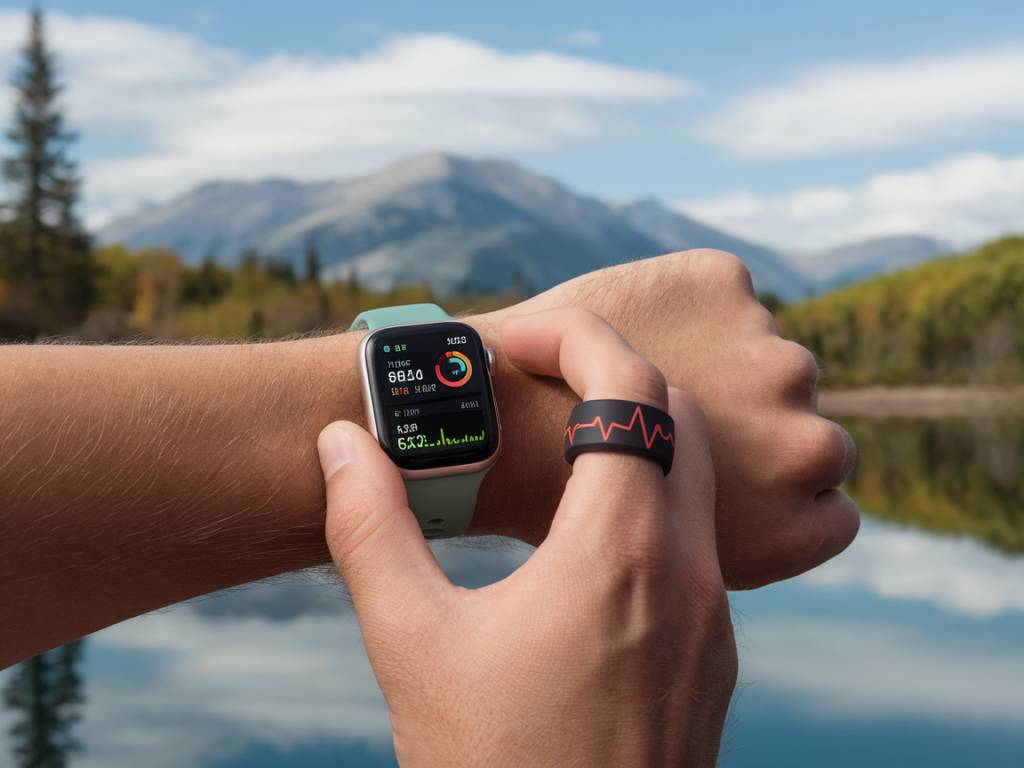Why Wearable Tech and Energy Awareness Go Hand in Hand
Imagine a world where your smartwatch doesn’t just track your steps or heart rate but also nudges you when you’re consuming more energy than necessary at home. Sounds futuristic? Not anymore. Wearable technology is no longer confined to fitness tracking or checking your notifications—it’s now stepping into the realm of energy awareness, helping users adopt more sustainable lifestyles.
As we race toward a greener future, tech industries are starting to unlock the untapped potential of wearables to drive energy-conscious behaviors. But how exactly does this work, and why should we care? Let’s dive in.
Data-Driven Awareness: Turning Invisible Behavior into Actionable Insights
One of the biggest barriers to reducing our energy footprint is the lack of awareness. Many of us simply don’t realize how much energy we’re using—or wasting—on a daily basis. Wearable devices, however, are ideally positioned to change this dynamic. Equipped with sensors, connectivity, and data analytics, they can monitor your habits and deliver insights directly to your wrist (or wherever else you’re wearing them).
For instance, certain wearable devices are now capable of syncing with smart home systems. Picture this: your smartwatch collects data on your daily routine, detects inefficiencies like leaving the lights on when you exit a room, and sends you a gentle reminder to turn them off. Suddenly, energy awareness becomes less of a hassle and more of an integrated part of your daily life.
Tackling Energy Vampires: Real-Time Alerts via Wearables
You’ve probably heard of “energy vampires”—devices that continue to draw power even when they’re turned off. Many homes have multiple energy vampires, from microwaves to entertainment systems, sucking up unnecessary electricity. But here’s where wearables come in.
Some energy-conscious gadgets can utilize smart plugs and wearable synchronization to notify users when such devices are unnecessarily consuming power. Say you’ve left a charger plugged in. Your smart band could ping you with a quick alert: “Hey, did you forget to unplug the charger in the living room?” This real-time intervention makes it easier to break bad habits and curb energy waste.
Gamification of Energy Saving: Making Sustainability Fun
Let’s be honest—saving energy doesn’t always sound exciting. But wearable technology is changing that by gamifying sustainability. With apps designed to integrate with wearables, you can set challenges for energy conservation, view your progress in real time, and even compete with friends or family members.
Think of it as Fitbit for energy: the more energy you save, the more rewards you unlock. Some apps offer incentives like badges or discounts on sustainable products. By adding an element of fun to energy saving, wearable tech turns a potentially dry subject into an engaging activity that you actually look forward to.
Wearables as Teachers: Educating for a Sustainable Future
Wearables aren’t just tools; they’re educational partners. Many energy-focused apps connected to wearables provide bite-sized information on sustainability. Maybe your wearable shares a quick tip: “Did you know washing clothes in cold water saves up to 90% of washing machine energy use?” These small yet impactful lessons accumulate over time, guiding users toward smarter and more eco-friendly choices without overwhelming them.
What’s more, advanced wearables can predict and suggest energy-efficient alternatives in real time. For example, if you’re heating your home inefficiently, your device might recommend a more optimal thermostat setting based on weather data.
Empowering Communities: The Big Picture Benefits of Wearable Tech
The benefits of energy-conscious wearables aren’t limited to individuals—they ripple out to entire communities. Imagine neighborhoods where wearables actively collect and share anonymized data on household energy use. This collective insight could help city planners and policymakers identify energy trends and implement targeted interventions to improve efficiency on a broader scale.
In some cases, utilities and tech companies are already exploring partnerships to deploy wearables in pilot programs aimed at reducing peak energy demand. These programs provide participants with wearables that offer real-time feedback and incentives, resulting in measurable energy savings across entire networks.
Breaking Barriers: Challenges Facing Wearable Tech for Energy Awareness
Of course, no innovation is without hurdles. Despite its potential, wearable tech faces several barriers to widespread adoption in the energy sector. Cost is an obvious factor—advanced wearables equipped with energy-monitoring capabilities can still be pricey, putting them out of reach for many users. Additionally, there are questions around data privacy and security. Consumers need to trust that their energy usage data won’t be misused or shared without consent.
Then there’s the question of integration. For wearable tech to have a meaningful impact, it must seamlessly communicate with smart home systems and energy-monitoring infrastructure. Although strides are being made, interoperability remains a challenge for many devices on the market today.
What’s Next for Wearable Tech and Energy Awareness?
Despite these challenges, the future looks bright for wearable tech in the energy space. With advancements in artificial intelligence, machine learning, and IoT integration, devices are becoming more robust and efficient at analyzing energy usage patterns. As prices for tech continue to drop, we’re likely to see wider adoption among mainstream consumers.
Imagine waking up in a world where your smartwatch helps you achieve not only personal health goals but also energy conservation goals—without so much as a second thought. That’s the vision wearable tech is steering us toward. By bridging the gap between data and action, these devices are empowering us to shrink our carbon footprint, one small habit change at a time.
The Call to Action: Let’s Embrace Energy-Conscious Wearables
So, what do you say? Ready to let your wearable become more than just a fitness gadget? Whether you’re keen to track your home’s energy use, eliminate wasteful habits, or make energy-saving fun, wearable tech offers limitless possibilities. The goal isn’t just about keeping yourself informed; it’s about inspiring a culture of mindful resource use that can ripple across the globe.
Innovation and sustainability go hand in hand, and wearable technology is proof of that synergy. The energy transformation isn’t something we have to imagine anymore—it’s already happening, right on our wrists.






More Stories
L’essor des communautés énergétiques locales : vers une nouvelle gouvernance citoyenne de l’énergie
Powering Data Centers Sustainably: The Role of Renewable Energy in the Digital Age
Integrating Biophilic Design with Green Technology: A New Paradigm for Sustainable Living